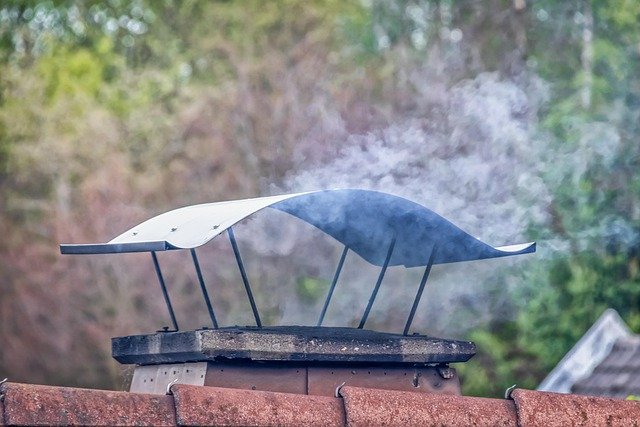Quonset Huts: Versatile and Cost-Effective Prefabricated Structures
Quonset huts, with their distinctive semi-cylindrical shape, have been a staple in prefabricated construction for decades. Originally designed for military use during World War II, these structures have evolved to serve a wide range of residential, commercial, and agricultural purposes. Their unique design, coupled with modern customization options, has led to a resurgence in popularity for those seeking affordable, durable, and adaptable building solutions.

What are the advantages of Quonset huts for various uses?
Quonset huts offer numerous benefits across residential, commercial, and agricultural applications. Their versatility allows them to be used as homes, workshops, storage facilities, or even livestock shelters. The open floor plan provides maximum usable space, making them ideal for a variety of purposes. In residential settings, they can be transformed into cozy homes or spacious studios. Commercially, they serve well as warehouses, retail spaces, or offices. For agricultural use, their expansive interiors make them perfect for equipment storage or as barns.
How does the arch design contribute to strength and weather resistance?
The iconic arch design of Quonset huts is not just aesthetically pleasing; it’s a key factor in their structural integrity. This shape allows for efficient distribution of weight and stress, making the buildings exceptionally sturdy. The curved roof naturally sheds snow and rain, reducing the risk of water damage or collapse under heavy loads. Additionally, the aerodynamic profile helps these structures withstand high winds, making them suitable for areas prone to severe weather conditions. This inherent strength and weather resistance contribute to their longevity and low maintenance requirements.
What customization options are available for modern Quonset hut living spaces?
Despite their utilitarian origins, Quonset huts can be transformed into comfortable and stylish living spaces. Modern customization options include adding windows, skylights, and doors to maximize natural light and ventilation. Interior walls can be erected to create separate rooms, while lofts can be added to increase usable floor space. Insulation techniques have also improved, allowing for better temperature control in various climates. Exterior finishes can be applied to enhance aesthetics, and some designs incorporate porches or extended living areas. These customizations enable Quonset huts to rival traditional homes in terms of comfort and functionality.
Why are Quonset huts considered a cost-efficient and easy-to-assemble option?
The cost-efficiency of Quonset huts stems from several factors. Their prefabricated nature means they can be manufactured off-site and quickly assembled on location, reducing labor costs and construction time. The simple design requires fewer materials compared to traditional buildings, further lowering expenses. Assembly is straightforward, often requiring minimal specialized equipment or skills, which can translate to significant savings on construction costs. Additionally, the durability of Quonset huts means lower maintenance and repair costs over time, contributing to their overall cost-effectiveness.
What are some unique facts about Quonset huts in modern applications?
Quonset huts have found surprising applications in the modern world. Some innovative uses include:
-
Conversion into eco-friendly tiny homes, aligning with the minimalist living trend
-
Transformation into trendy restaurants or breweries, capitalizing on their industrial aesthetic
-
Use as disaster relief shelters due to their quick assembly and durability
-
Adaptation for hydroponic farming, utilizing their spacious interiors for vertical growing systems
-
Integration into sustainable community designs, where their energy efficiency is highly valued
How are Quonset huts being used in off-grid living and eco-friendly housing?
The trend towards sustainable living has brought Quonset huts into the spotlight for off-grid and eco-friendly housing solutions. Their simple structure makes them ideal for incorporating solar panels, rainwater collection systems, and other sustainable technologies. The open interior allows for flexible placement of energy-efficient appliances and systems. Some eco-conscious builders are using recycled materials in Quonset hut construction, further reducing environmental impact. These structures are also being used in intentional communities and eco-villages, where their low cost and minimal environmental footprint are highly valued.
| Provider | Basic Kit Cost | Customization Options | Estimated Assembly Time |
|---|---|---|---|
| SteelMaster Buildings | $7,000 - $15,000 | Windows, Doors, Insulation | 2-5 days |
| Pioneer Steel | $5,500 - $12,000 | End Walls, Skylights, Color Options | 3-7 days |
| Archway Steel Buildings | $6,500 - $14,000 | Interior Partitions, HVAC Systems | 4-8 days |
| Metal Building Kings | $8,000 - $18,000 | Custom Sizes, Garage Doors | 5-10 days |
Prices, rates, or cost estimates mentioned in this article are based on the latest available information but may change over time. Independent research is advised before making financial decisions.
In conclusion, Quonset huts represent a versatile and cost-effective solution for a wide range of building needs. Their unique arch design provides exceptional strength and weather resistance, while modern customization options allow for comfortable and stylish living spaces. The ease of assembly and overall cost-efficiency make them an attractive choice for those seeking alternative housing or multipurpose structures. As trends in sustainable and off-grid living continue to grow, Quonset huts are likely to play an increasingly important role in eco-friendly construction and innovative architectural designs.




